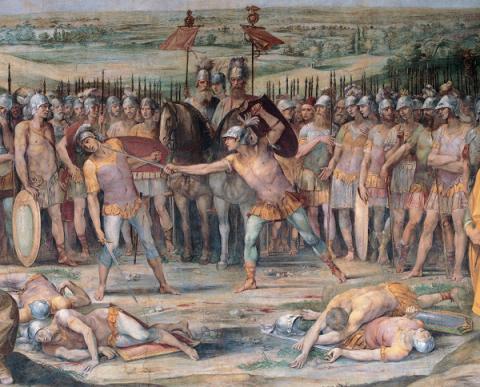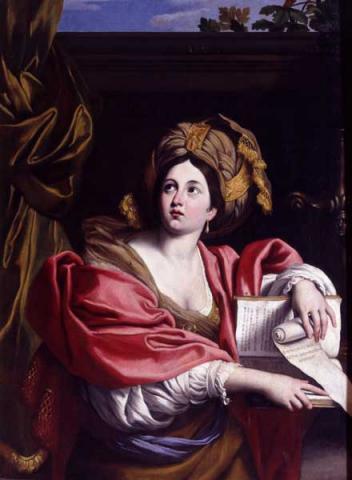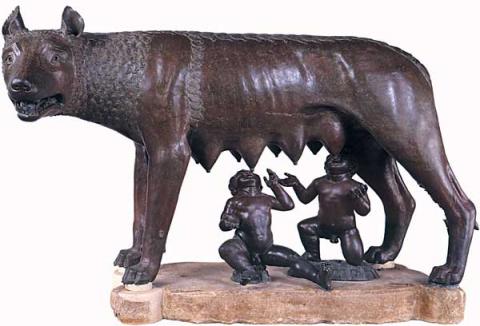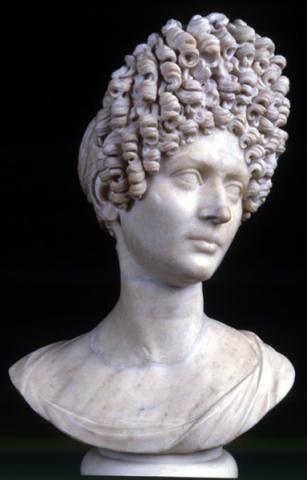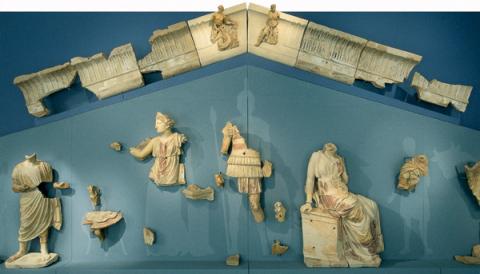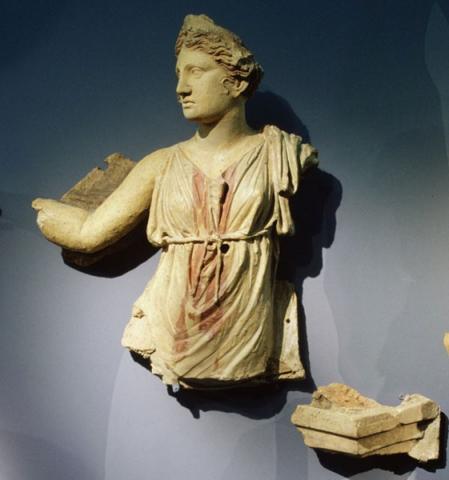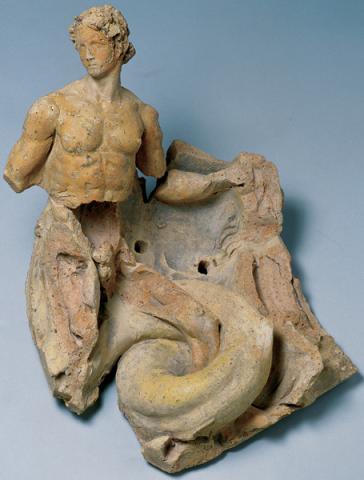Hall of Pediment
The recreation of the terracotta pediment from Via di San Gregorio, presented in an exhibition in 2002, has been made part of the route through the museum.
In the high relief of the tympanum is portrayed in a scene showing a sacrifice in the presence of three divinities, Mars and two goddesses, celebrated by an offerer wearing a toga to whom three bare-chested servants lead six animals in two rows starting from the two extremities of the pediment.
There is still also part of the architectural framework of the sloping roof (pediment's sima), with at the centre a small relief showing the myth of Heracles and Hesione.
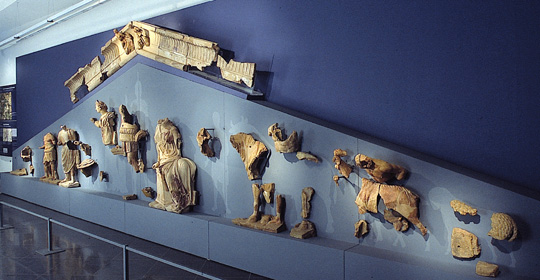
The permanent exhibition makes a proposal of reconstruction of the decoration of the pediment in polychrome terracotta of a Roman temple of the mid second century B.C., discovered in the late nineteenth century in Via San Gregorio, in the valley between the Palatine and the Caelian Hill, while working on the implementation of a large sewerage. The terracottas were found in the middle of the street below a layer covering the debris of Nero’s fire in 64 AD.
The new additions emphasize the exceptional nature of this archaeological find, which represents the most complete example of a closed terracotta pediment of the late Republican age discovered in Rome so far.
The high-relief pediment depicts a scene of sacrifice to Mars and two female deities: celebrated by an officiant wearing a toga to whom three bare-chested servants lead six animals in two rows starting from the two extremities of the pediment.
The scene captures the moment after the initial phase (praefatio), when wine and incense are poured on the altar, and immediately before the animal consecration to the gods (immolation). The animals presented to the officiant are sprinkled with a special mixture of spelt and salt (mola salsa) and with wine on their snouts, they are also symbolically marked with a knife from head to tail. The killing will take place immediately after and parts of their bodies will be offered to the deities on the altar.
A little relief depicting of the myth of Hercules versus the sea monster to save Hesione, daughter of King Laomedon of Troy and sister of Priam, was situated on the top of the roof and applied to the central panels of the brightly painted cornice that fringed the eaves.


























